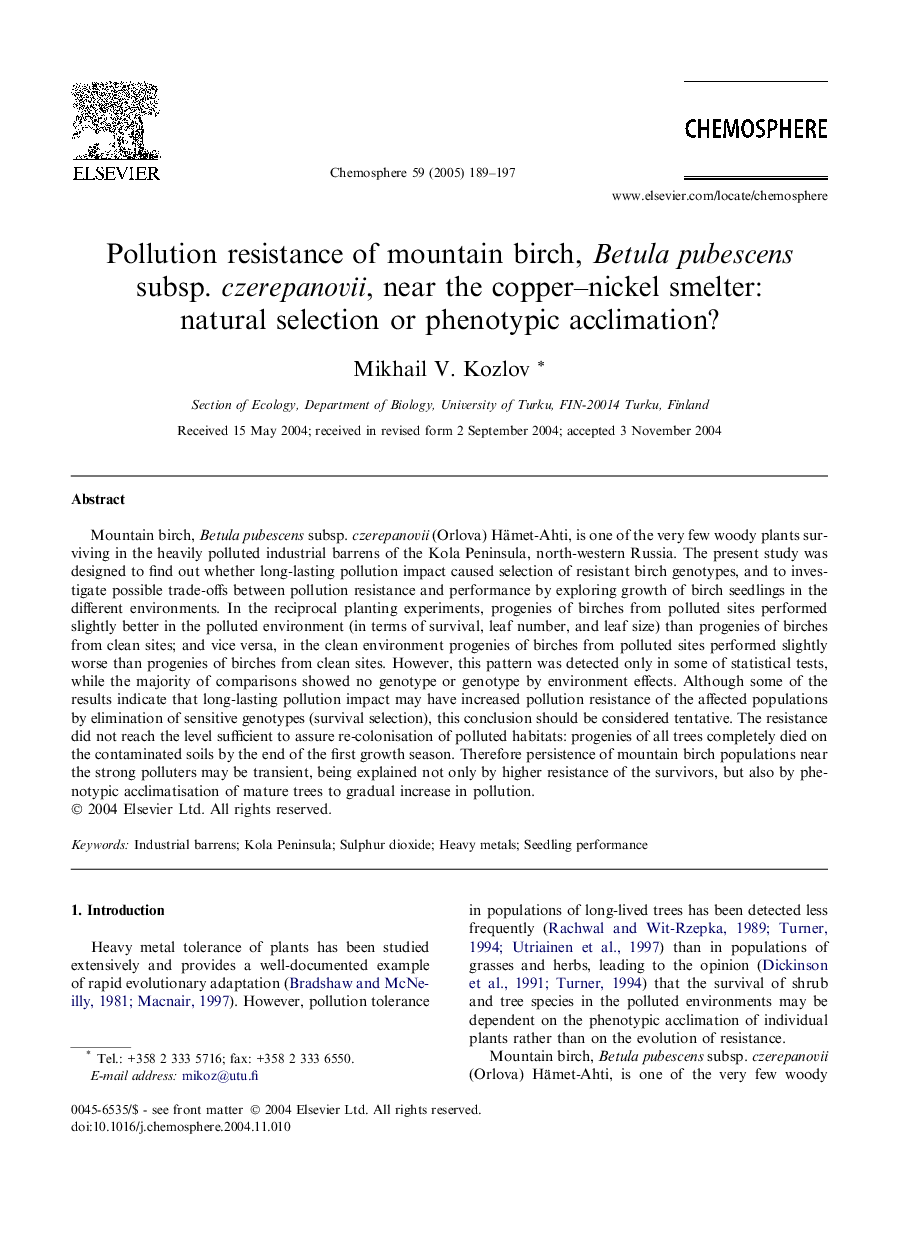| Article ID | Journal | Published Year | Pages | File Type |
|---|---|---|---|---|
| 9451301 | Chemosphere | 2005 | 9 Pages |
Abstract
Mountain birch, Betula pubescens subsp. czerepanovii (Orlova) Hämet-Ahti, is one of the very few woody plants surviving in the heavily polluted industrial barrens of the Kola Peninsula, north-western Russia. The present study was designed to find out whether long-lasting pollution impact caused selection of resistant birch genotypes, and to investigate possible trade-offs between pollution resistance and performance by exploring growth of birch seedlings in the different environments. In the reciprocal planting experiments, progenies of birches from polluted sites performed slightly better in the polluted environment (in terms of survival, leaf number, and leaf size) than progenies of birches from clean sites; and vice versa, in the clean environment progenies of birches from polluted sites performed slightly worse than progenies of birches from clean sites. However, this pattern was detected only in some of statistical tests, while the majority of comparisons showed no genotype or genotype by environment effects. Although some of the results indicate that long-lasting pollution impact may have increased pollution resistance of the affected populations by elimination of sensitive genotypes (survival selection), this conclusion should be considered tentative. The resistance did not reach the level sufficient to assure re-colonisation of polluted habitats: progenies of all trees completely died on the contaminated soils by the end of the first growth season. Therefore persistence of mountain birch populations near the strong polluters may be transient, being explained not only by higher resistance of the survivors, but also by phenotypic acclimatisation of mature trees to gradual increase in pollution.
Related Topics
Life Sciences
Environmental Science
Environmental Chemistry
Authors
Mikhail V. Kozlov,
